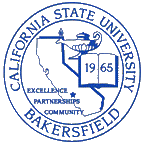Notes on Solutions
Most of the assignments done in this course, with the exception of the ones
teaching specific languages like pure C or object-oriented programming with
C++, will have many ways to code the data structure. Solutions will be given
in multiple formats to show the many different ways the data structures may
be coded. In addition to the syntax required for the assignment, solutions
may be given in pure C, basic object-oriented programming, and/or
object-oriented programming with template classes. The file name will say
which style is being used.
Additionally, for data structures which can be coded as arrays, there may be a statically sized array version and a dynamically sized array version. The full list of alternate coding methods might be split amongst these two methods of allocating the array.
Naming Conventions for Solutions
The filename will indicate what coding style has been used for the file.
Here are the naming conventions. In the name conventions <assignment>
is the name of the assignment, such as hw1, and <file> is the name of
the data structure, such as dynamiclist.
- <assignment>.cpp
- This is the official solution for the assignment. Your code should have resembled this solution to receive full points for the assignment.
- <file>_purec.c
- This is the pure C version of the data structure. Remember that you must
use the
gcccommand to compile pure C programs. - <file>_oop.cpp
- This is the basic object-oriented programming approach for the data structure.
- <file>_template.cpp
- This is the data structure coding in object-oriented programming with template classes, which allow for any type of data (int, char, float, etc) to be stored in the data structure.
staticlist.cpp.
